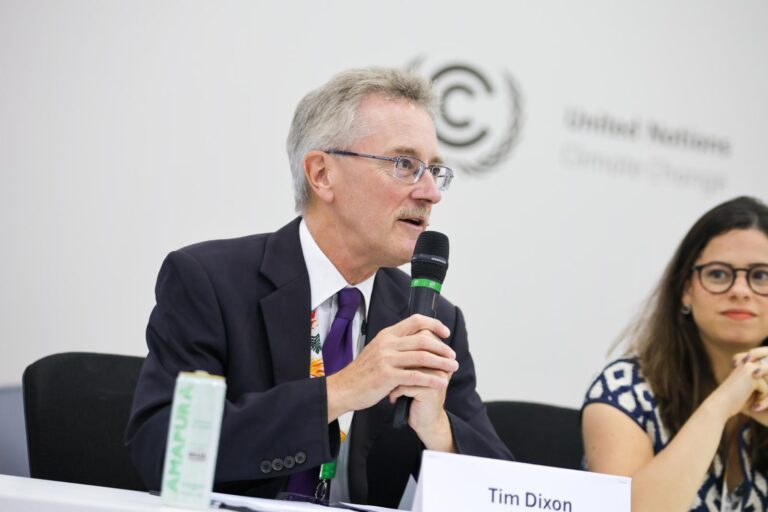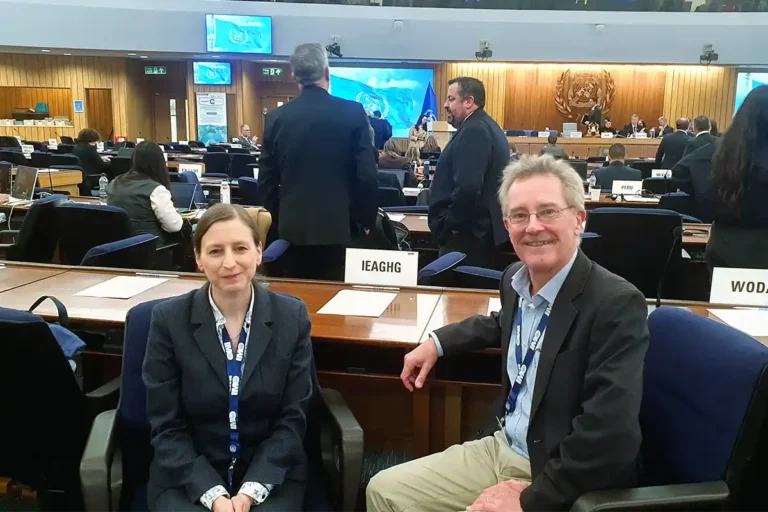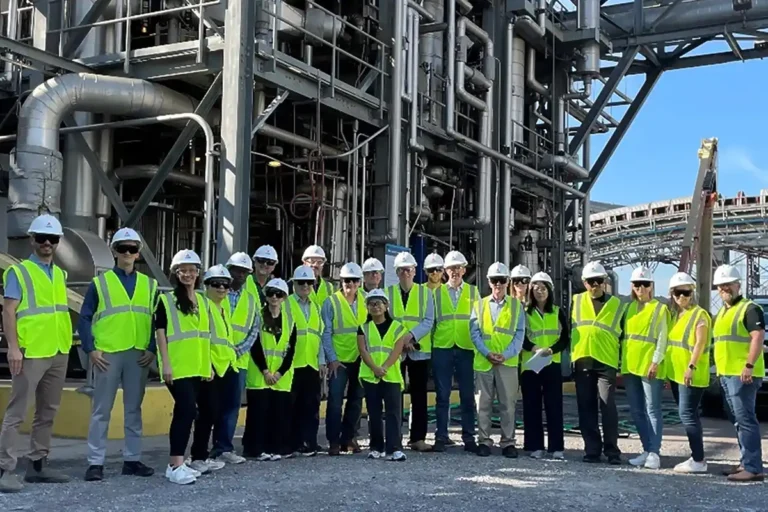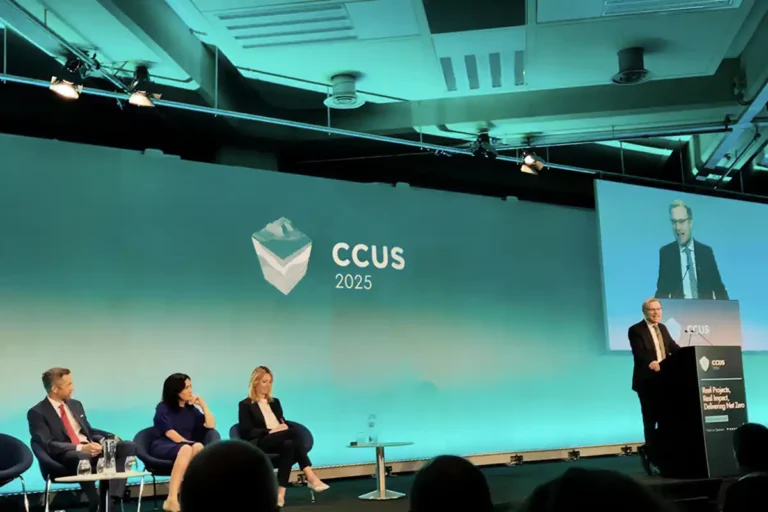
UK CCUS Cluster projects: two given go-ahead, and details of all clusters provided at CCSA Conference
19 October 2021

 The East Coast Cluster (pictured) and HyNet have been successful.
The East Coast Cluster (pictured) and HyNet have been successful.
The UK government has announcement the two projects to move forwards towards development and operation by 2025. Details on all UK clusters were presented in the CCSA’s CCUS 2021 Conference last week. Here are summaries of these significant developments.
Today Greg Hands, Minister State for Energy, Clean Growth and Climate Change announced that the Department of Business, Energy and Industrial Strategy (BEIS) has completed the first phase of an evaluation of the five cluster submissions received by the Department.The Minister confirmed that the Hynet and East Coast Clusters have been confirmed as Track 1 clusters for the mid-2020s.These two clusters will be progressed into Track-1 negotiations. Provided the clusters represent value for money then, subject to final decisions by Ministers, they will receive support under the government’s CCUS Programme.
The Minister also announced that the Scottish Cluster would be a reserve back-up if one of the other two didn’t qualify for government support. Continual engagement with the Scottish Cluster was stressed to ensure continuity with its planning and development.The UK Government’s commitment to decarbonise industry by developing clusters was repeated; and will lead to Track-2 enabling 10Mtpa capacity to become operational by 2030. Teesside, the Humber, Merseyside, North Wales and the North East of Scotland are potential beneficials of this ambitious plan.The cluster sequencing process, through the CCS Infrastructure Fund, has been allocated £1 billion to provide industry with the certainty required to deploy CCUS at pace and at scale.
The Hynet cluster will link point sources initially from the Stanlow Oil Refinery on the Mersey Estuary.Repurposed natural gas pipelines will be used to transport over 1 million tonnes into the Hamilton gas field in Liverpool Bay.Other depleted gas fields in Morecambe Bay, slightly further north, also have potential for future storage.Significantly, this cluster plans to build the UK’s first hydrogen pipeline network to supply to local industry and to blend hydrogen with natural gas into local networks. Over 30TWh per year of hydrogen, initially from Stanlow, then extending to other production sites across the region are anticipated. This hydrogen will be supplied to at least one major power station running exclusively on hydrogen. The region also benefits from the close proximity of multiple underground salt caverns in the Cheshire salt basin.These will be the site of the first large-scale underground storage of hydrogen in the UK, with greater than 1TWh of capacity. Around 350km of new-build pipelines to create the first hydrogen network in the UK are planned.
The East Coast Cluster is centred on two industrial regions along the Tees (Net Zero Teesside) and Humber (ZeroCarbon Humber) Estuaries.On Teesside there are multiple point sources of CO2 emissions from a series of petrochemical plants, at least one gas fuelled power station plus, two fertilizer plants.The ZeroCarbon Humber partnership includes two low carbon hydrogen facilities one of which could have the potential to produce hydrogen from renewable sources.The cluster also plans links to a major steel works and CO2 capture from the Drax power station which runs four of its generation units on biomass.Both these major clusters will be linked by two subsea pipelines (one 145 km and the other 85 km) to the Endurance storage site.The Northern Endurance Partnership will provide the infrastructure needed to pipe the CO2 to the storage site.The target formation, the Bunter Sandstone, is considered to be an excellent candidate for CO2 storage.Previous gas exploration, and a further characterisation well drilled in 2013, have contributed to its evaluation.
CCSA Conference 2021
Last week the Carbon Capture and Storage Association organised a three day CCUS Virtual Conference under the theme “Leading on net zero and clean growth”.Notable features of the event were a series of impressive contributions from high-profile exponents of future low carbon options for industry, including a representative from the Trades Union Congress.They also included Baroness Liddell of Coatdyke, Joanna Whittington (Director General of Energy and Security at the UK’s Department for Business Energy and Industrial Strategy (BEIS), Dame Judith Hackitt (Chair of Make UK) and John Johnson (Director of Development at SSE Thermal).The conference was also addressed by the Rt Hon Kwasi Kwarteng MP, Secretary of State for BEIS.The minister, who gave a strong backing for CCS, also announced that the UK Government will announce its support for two of the proposed CCS clusters by the end of October.
Five clusters have passed a Phase-1 eligibility test which is defined as a CCUS cluster that has at least two CO2 capture projects linked by pipeline to a transport and storage (T&S) network and an offshore storage site. The current contenders include:
DelpHYnus (a combined T&S development serving the South Humber Industrial area, together with production facilities for lower carbon hydrogen, at the former Theddlethorpe Gas Terminal site).
- East Coast Cluster (Teesside & Humberside linked to the Northern Endurance Partnership offshore storage site).
- Hynet (Merseyside region and North Wales linked to storage sites in the Irish Sea).
- Scottish Cluster (Acorn Project that includes Grangemouth, Peterhead and the Goldeneye pipeline an offshore storage site in the Captain Sandstone).
- V Net Zero (off the east Lincolnshire coast comprised of a new 53-kilometre onshore pipeline connecting Immingham to Theddlethorpe Gas Terminal.It will reuse the LOGGS offshore pipeline with a new 23-kilometre offshore spur line to the Victor depleted gas field storage site.
What marked this conference out was not only the extent of industrial collaboration concentrated in six prominent clusters around the UK, but also the investment strategies, development plans and employment benefits that could accrue from the ambitious proposals. This invigorating vision for the UK was outlined by Kwasi Kwarteng who highlighted the continued decarbonisation of the electricity system, mainly from offshore wind, combined with CCS and increased hydrogen production. The minister remarked that during a trip to Norway his hosts had commented on the impressive progress the UK is making with CCS as part of its levelling up agenda. This could equate to 50,000 jobs. The UK Government has also published a Hydrogen Strategy which includes hydrogen derived from fossil fuels and electrolysis. Other speakers observed that initially hydrogen produced from fossil fuel sources within industrial clusters would utilised CCS to form a decarbonised fuel. A hydrogen distribution network could then be established and be supplemented by hydrogen from renewable sources as this option becomes more competitive. However, the expanded use of hydrogen will lead to fresh challenges especially large-scale subsurface storage.
Contributors from Storegga, Hermes Financing, and UK Export Finance alluded to experience from the financing of offshore wind and how this has considerable relevance to investment in CCS. Project finance for offshore wind required £2B and, in the early days, highly tailored cautious deals had to be struck.European export credit agencies (ECAs) agencies were the first to invest into this renewable energy source. Significantly they wanted European supply chains to ensure technical reliability and track record. Revenue models with a risk / return profile based on contract for difference (CfD) could also be appropriate for CCS. Multiple partners and point sources within a cluster, and lack of familiarity with CCS technology, add complexity for investors. However, now that momentum is gathering pace with cluster development interest is focused on which one proceeds. CCS needs to be supported as it grows but it does offer a potential long term investment. This is attractive to investors such as pension schemes which have a 20-25 investment horizon and are looking for quality assets with low risk but not necessarily high returns.
The three day event was rounded off with an international perspective on CCUS development, including a contribution from the IEAGHG’s Tim Dixon. The overriding impression from this virtual conference is the acceleration in scale-up proposals for industrial CO2 capture, hydrogen production and CO2 storage notably in the UK. Experience from the expansion of offshore wind, and its relevance for CCUS development, also stood out.
Other articles you might be interested in
Get the latest CCS news and insights
Get essential news and updates from the CCS sector and the IEAGHG by email.
Can’t find what you are looking for?
Whatever you would like to know, our dedicated team of experts is here to help you. Just drop us an email and we will get back to you as soon as we can.
Contact Us NowOther articles you might be interested in
Get the latest CCS news and insights
Get essential news and updates from the CCS sector and the IEAGHG by email.
Can't find what you are looking for?
Whatever you would like to know, our dedicated team of experts is here to help you. Just drop us an email and we will get back to you as soon as we can.
Contact Us Now









